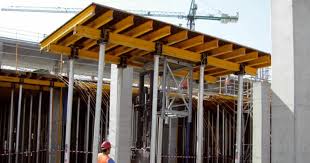Dec . 06, 2024 07:42 Back to list
Creating Innovative Solutions with the Scaffold Platform for Enhanced Project Development
The Importance of Scaffold Platforms in Modern Construction
In the ever-evolving world of construction, safety and efficiency are paramount. Among the various tools and materials employed in the industry, scaffold platforms have emerged as essential components in ensuring both worker safety and project efficiency. These structures, designed to provide support and access for construction workers, play a pivotal role in a wide range of construction activities, from building skyscrapers to renovating homes.
At its core, scaffolding is a temporary structure that elevates workers and materials, allowing them to perform tasks at various heights. This functionality is crucial, especially in multi-story buildings where access to upper levels can be challenging. By facilitating safe and stable access, scaffold platforms minimize the risk of falls—one of the leading causes of injury in construction. According to the Occupational Safety and Health Administration (OSHA), falls account for a significant percentage of fatalities in the industry, emphasizing the critical need for robust safety measures.
Beyond safety, scaffold platforms contribute significantly to operational efficiency. They provide a stable working surface for construction teams to handle materials and tools, ensuring that workers can perform their tasks without constant interruption. Whether painting, installing fixtures, or conducting inspections, the stability and accessibility offered by scaffolding allow workers to focus on their jobs, thereby improving productivity on site. Furthermore, scaffolds can be customized to fit the specific requirements of a project, allowing for versatility that traditional ladders and lifts cannot match.
scaffold platform

One of the noteworthy trends in modern construction is the shift towards modular scaffold systems. These systems consist of pre-fabricated components that can be rapidly assembled and disassembled. The modular approach not only speeds up the construction process but also reduces the likelihood of errors that can occur with on-site assembly. As a result, construction companies are increasingly investing in modular scaffold platforms, recognizing the long-term benefits they provide in terms of time and cost savings.
Additionally, the use of advanced materials in scaffold construction has enhanced their durability and stability. Modern scaffolds are often made from lightweight yet strong materials such as aluminum and fibreglass, which are resistant to corrosion and wear. This advancement not only extends the lifespan of the scaffold platforms but also makes them easier to transport and set up. As sustainability becomes a more significant concern within the construction industry, manufacturers are also focusing on eco-friendly materials and practices, further aligning scaffold production with environmental standards.
Moreover, scaffolding plays a crucial role beyond just new construction. In renovation and maintenance projects, scaffold platforms provide the necessary support for skilled workers to safely perform their tasks on aging structures. Whether it involves repairing historical buildings or conducting routine maintenance on commercial properties, scaffold platforms ensure that these important tasks can be done safely and efficiently.
In conclusion, scaffold platforms are indispensable in the construction industry, providing a safe and efficient means for workers to access heights and complete their tasks. With the ongoing advancements in scaffold design and materials, these platforms are evolving to meet the demands of modern construction practices. As projects become more complex and the need for safety and efficiency grows, the role of scaffold platforms will continue to be vital in shaping the future of construction. Embracing innovative scaffold solutions will not only lead to safer work environments but also enhance overall project outcomes, fostering a culture of safety and productivity across the construction landscape.
-
Adjustable Heavy Duty Props for Slab Formwork - Max Load & Safety
NewsAug.30,2025
-
Premium Formwork Wing Nuts & Tie Rods | Factory Supplier
NewsAug.29,2025
-
Expert Ringlock Scaffolding: Durable, Safe, Efficient Solutions
NewsAug.28,2025
-
Ringlock Scaffolding: Strong, Safe & Efficient Solutions
NewsAug.27,2025
-
OEM Column Formwork: Circular, Curved & Inclined Solutions
NewsAug.26,2025
-
Premium Scaffolding Jacks: Stable, Adjustable & Durable
NewsAug.25,2025